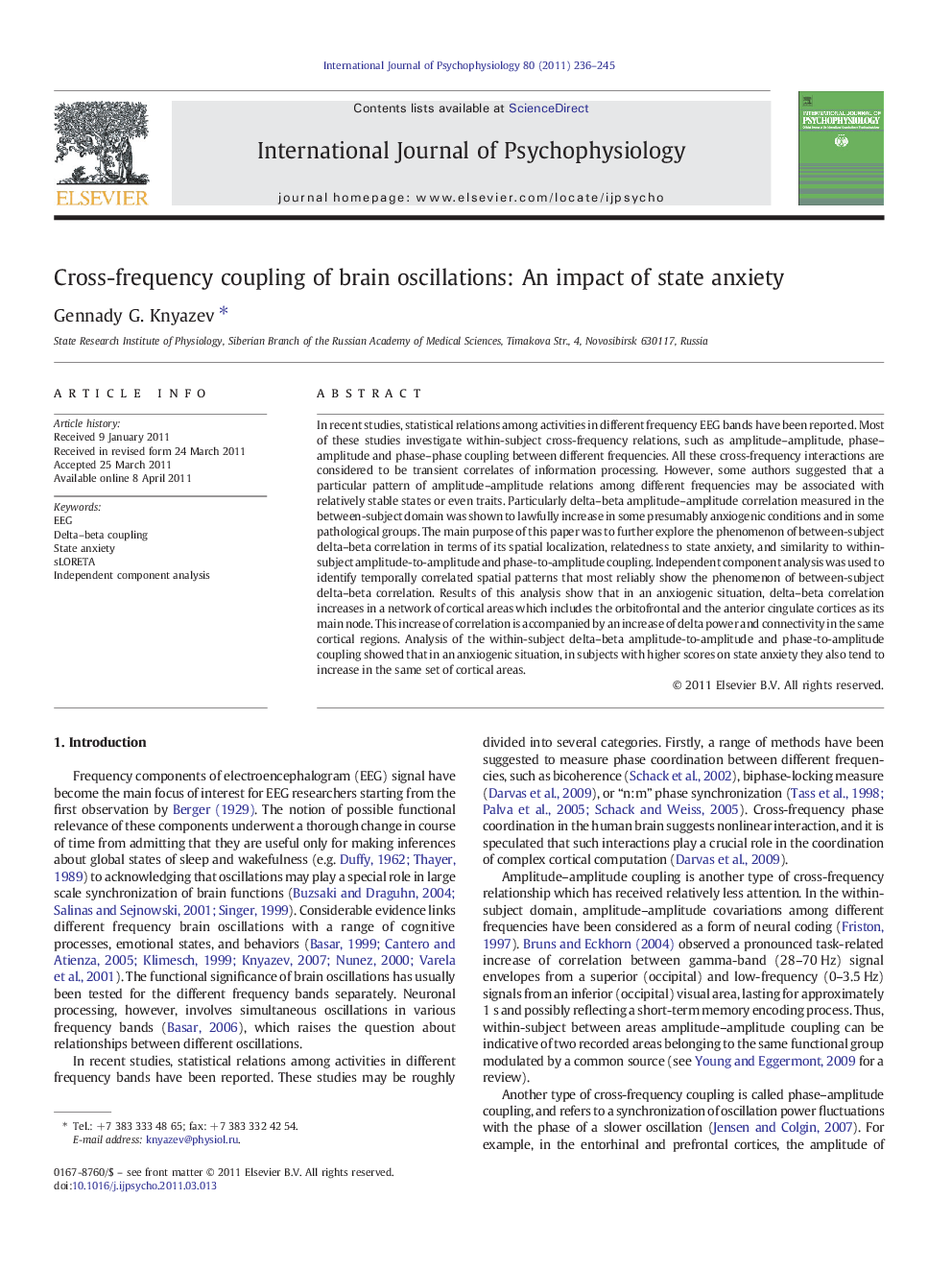ترجمه فارسی عنوان مقاله
جفت شدگی متقابل فرکانس نوسانات مغزی: یک تاثیر اضطراب حالتی
عنوان انگلیسی
Cross-frequency coupling of brain oscillations: An impact of state anxiety
| کد مقاله | سال انتشار | تعداد صفحات مقاله انگلیسی |
|---|---|---|
| 75156 | 2011 | 10 صفحه PDF |
منبع

Publisher : Elsevier - Science Direct (الزویر - ساینس دایرکت)
Journal : International Journal of Psychophysiology, Volume 80, Issue 3, June 2011, Pages 236–245
ترجمه کلمات کلیدی
EEG - جفت شدگی دلتا و بتا - اضطراب؛ تحلیل مولفه های مستقل
کلمات کلیدی انگلیسی
EEG; Delta–beta coupling; State anxiety; sLORETA; Independent component analysis

